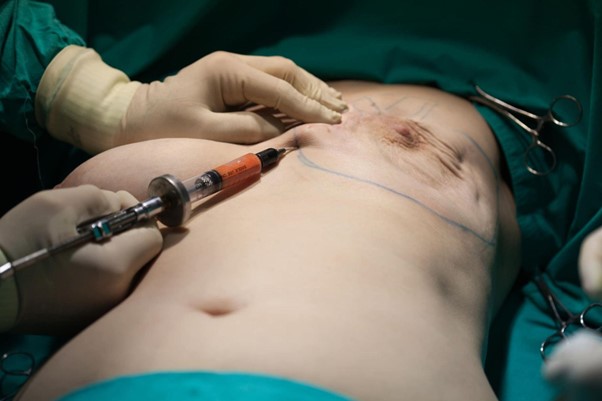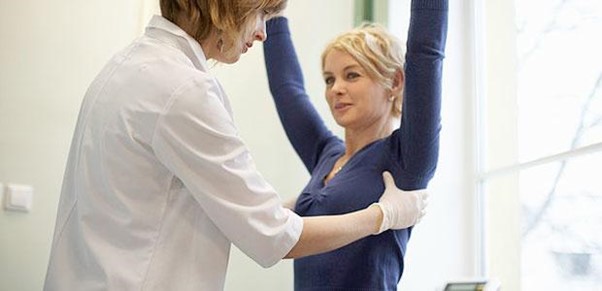breast oasis network helping to reach women around the globe
It’s time to take action!
Many generous people that have teamed with Breast Oasis to help women in need. Their contributions are vital to the success of our cause and we are very excited to have their support. On behalf of women everywhere we look forward to working with you and others to strengthen the reach of Breast Oasis and help create an “oasis” for women in need.
providing new and gently used bras to women in need.
Breast Oasis is a non-profit charitable organization dedicated to supporting communities by providing women who may not be able to afford them, with clean, certified, gently used bras.
Breast Oasis is about women helping women, so please join us.




Breast Reconstruction Surgery: When and Why It’s Considered

The What and Why of Breast Reconstruction Surgery
Breast reconstruction is a deeply personal and transformative procedure for many women who have undergone mastectomy due to breast cancer or who are at high risk for developing the disease.
The initial reconstruction surgery offers a significant psychological and aesthetic benefit, helping to restore the body’s appearance and self-image. However, there are times when the initial reconstruction may not yield the desired results or complications arise, necessitating a revision surgery.
In this detailed guide, we’ll delve into the when and why breast reconstruction revision is considered and what it entails.
Understanding Breast Reconstruction Procedure
A breast reconstruction can vary from minor touch-ups to a complete overhaul of a previous reconstruction. It involves surgical procedures designed to improve or correct the appearance of breast implants and the breast area after initial reconstruction surgery.
These revisions can address cosmetic concerns, physical discomfort, and changes in the reconstructed breasts over time due to aging, weight fluctuations, or other factors.
When Is Breast Reconstruction Considered?
Complications from Previous Surgeries
Capsular Contracture: Capsular Contracture: This phenomenon transpires when the scar tissue, which typically encases an implant, constricts and compresses it, leading to discomfort and a distorted appearance. Corrective surgery may require the excision of the scar tissue and, if necessary, substitution of the implant.

Implant Rupture or Deflation: If an implant breaks or leaks, a revision is necessary to replace the implant and ensure the safety and appearance of the breast.
Infection: While rare, infections that do not resolve with antibiotics may require surgical intervention.
Changes Over Time
Natural Aging: The skin and tissues change over time, which can affect the appearance of reconstructed breasts. Women may choose revision surgery to restore a more youthful or desired appearance.
Weight Fluctuations: Significant weight gain or loss can alter how reconstructed breasts look, leading to the need for revision surgery.
Radiation Therapy: Changes in breast tissue following radiation therapy can impact the reconstruction, sometimes necessitating a revision.
Desire for Improved Aesthetics
Symmetry Issues: Over time, a woman’s natural breast may change due to aging, weight changes, or hormonal fluctuations, while the reconstructed breast remains unchanged, leading to asymmetry that a revision can correct.
Unsatisfactory Results: Sometimes, the outcome of the initial reconstruction might not meet a patient’s expectations. Revision surgery can address issues such as size, shape, or scarring.
Health and Lifestyle Changes
New Health Diagnoses: For instance, if a woman initially chose implant-based reconstruction but has since developed an autoimmune condition or other health concerns, she may opt for revision surgery to replace implants with autologous (own tissue) reconstruction.
Lifestyle Considerations: A patient’s lifestyle or personal preferences might change over time, leading to a decision to revise the initial reconstruction.
Why Is Breast Reconstruction Revision Considered?
Improving Quality of Life
The primary goal of revision surgery is to improve a woman’s quality of life. Whether it’s alleviating discomfort or enhancing the appearance of the breasts, revisions are aimed at helping women feel more comfortable and confident in their bodies.

Advancements in Surgical Techniques
As plastic and reconstructive surgery techniques advance, new methods may become available that offer better results than were possible at the time of the initial reconstruction. Women might opt for revision surgery to take advantage of these innovations.
Psychological and Emotional Well-being
Breast reconstruction is as much about psychological recovery as it is about physical recovery. A revision may be pursued to help a woman feel whole again and to move forward after a breast cancer diagnosis and treatment.
Preparing for Breast Reconstruction
Consultation and Evaluation
- A thorough consultation with a board-certified plastic surgeon specializing in breast reconstruction is crucial. The surgeon will evaluate the existing reconstruction, consider the patient’s overall health, and discuss desired outcomes.
- Imaging tests may be performed to assess the current state of the breast implants and surrounding tissues.
Setting Realistic Expectations
- The surgeon should clearly outline what can be achieved with revision surgery, including the limitations and potential risks.
- A discussion about the anticipated recovery process and timeline is also essential for patient preparation.
The Procedure: What to Expect
Custom-Tailored Approach
Each revision surgery is unique and tailored to the patient’s specific needs and goals. It might involve implant exchange, fat grafting, flap reconstruction revision, scar revision, or a combination of procedures.
Anesthesia and Hospital Stay
- Breast reconstruction revision is usually performed under general anesthesia.
- The length of the hospital stay can vary depending on the extent of the surgery.
Recovery
- Recovery from revision surgery may be similar to or shorter than the initial reconstruction recovery, depending on the procedures performed.
- Patients will receive detailed post-operative care instructions to aid in the healing process.
Aftercare and Recovery
Follow-Up Appointments

Regular follow-up appointments are critical to monitor the healing process and the outcome of the revision.
It’s important to keep all scheduled visits with the healthcare team and report any concerns immediately.
Support System
Having a strong support system at home can greatly assist in the recovery process. Assistance with daily tasks and emotional support are invaluable during this time.
Time Off and Rest
Adequate rest is vital to a successful recovery. Patients will need to take time off work and limit physical activities, especially those involving the upper body.
Conclusion
Breast reconstruction surgery is a complex process that serves to address both physical and emotional aspects of a woman’s journey after breast cancer. It is considered when there are complications, changes over time, or a desire for improved aesthetics.
Whatever the reason, it’s a decision that requires careful consideration and consultation with an experienced and compassionate surgeon.
A successful breast reconstruction can greatly enhance a patient’s quality of life, boosting confidence and comfort. It’s an opportunity to refine the results of an initial reconstruction and help align a patient’s physical appearance with their sense of self.
With realistic expectations and a clear understanding of the process, women can approach revision surgery with confidence, knowing that they are taking a positive step toward their ultimate goal of restoration and renewal.
Choosing the Best Time for Breast Reconstruction: What Every Patient Should Know

Timing Your Transformation: Optimal Scheduling for Breast Reconstruction
Choosing to undergo breast reconstruction is a significant decision that requires thoughtful consideration and planning. For women who have battled breast cancer or are facing the possibility due to genetic predisposition, the choice and timing of breast reconstruction surgery can profoundly affect their physical and emotional recovery.
This comprehensive guide is dedicated to helping patients navigate the complex decision-making process surrounding the timing of breast reconstruction, ensuring they are informed, prepared, and empowered in their journey.
The Journey to Recovery: Understanding Breast Reconstruction
Breast reconstruction is not merely a cosmetic procedure; it’s a step towards healing for many women who have undergone a mastectomy or lumpectomy. It aims to restore the breast to near its original shape, appearance, and size.
There are several reconstruction options, including implant-based reconstruction and autologous or “flap” reconstruction, which uses tissue from another part of your body.
Immediate vs. Delayed Reconstruction: Weighing Your Options
Immediate Breast Reconstruction
This occurs during the same surgery as the mastectomy. The primary benefit is waking up with a breast mound already in place, which can be less emotionally traumatic and often leads to better aesthetic outcomes.
However, not everyone is a candidate for immediate reconstruction. Certain medical conditions or treatment plans, such as the need for radiation therapy, may influence the decision to delay reconstruction.
Delayed Breast Reconstruction
This type of reconstruction is performed months or even years after the mastectomy. For women who need additional cancer treatments such as chemotherapy or radiation, delaying reconstruction might be the safest option.
Delayed reconstruction allows time for the treatment to be completed and for the body to heal and recover before undergoing another surgery.
Factors Influencing the Timing of Breast Reconstruction
Cancer Treatment Plans
The type and extent of breast cancer treatment can significantly influence the timing. For example, radiation therapy can affect the healing of the skin and tissues, potentially leading to complications with immediate reconstruction.
Discuss with your oncologist and plastic surgeon to determine how your cancer treatment may affect your reconstruction options.

Physical Health
Overall health, including healing ability and any chronic conditions, may impact the timing and type of reconstruction surgery.
Conditions such as diabetes or high blood pressure should be well-managed before undergoing any elective surgery.
Psychological Readiness
Emotional readiness is just as crucial as physical health. Breast reconstruction is a highly personal choice, and a woman must have time to process her cancer diagnosis and the changes to her body.
Mental health support and counseling can be invaluable in preparing for this step.
Lifestyle and Personal Preferences
Considerations such as work commitments, caregiving responsibilities, and personal lifestyle can influence when a woman chooses to have reconstruction.
Adequate support systems should be in place to allow for a smooth recovery process.
Insurance and Cost
Insurance coverage may affect the timing and type of reconstruction. It’s important to understand what is covered under your insurance plan.
The Women’s Health and Cancer Rights Act (WHCRA) in the United States ensures coverage for breast reconstruction after mastectomy, but it’s wise to verify the details with your insurance provider.
Preparing for the Best Timing: Steps to Take
Consult with a Multidisciplinary Team
A team that includes your oncologist, a plastic surgeon specializing in breast reconstruction, and potentially a genetic counselor, can provide the best guidance on timing.
A collaborative approach ensures that all aspects of your health and treatment are considered.
Understand the Procedures
Educate yourself on the various reconstruction options, including the pros and cons of each, and how they fit into your personal health scenario.
Attending support groups or speaking with women who have gone through reconstruction can offer valuable insights.
Consider Your Emotional Journey
Reflect on your emotional state and discuss any concerns with a therapist who understands the unique challenges faced by breast cancer survivors.
Your sense of readiness is a crucial factor in the timing of reconstruction.
Plan for Recovery
Understand the recovery process for each reconstruction option, and consider how this fits into your life and responsibilities.
Ensure you have a strong support network and help in place for your recovery period.
Review Financial Considerations
Discuss costs with your plastic surgeon’s office and review your insurance benefits ahead of time to avoid surprises.
Consider the financial impact of taking time off work and any assistance you may need at home during recovery.
Navigating the Emotional Aspects of Timing
Choosing the best time for breast reconstruction is not only a medical decision but an emotional one. It is vital to acknowledge and address the psychological and emotional factors involved.
Feeling confident and at peace with your decision is essential. For some, immediate reconstruction can offer a sense of closure, while for others, delaying the procedure allows time to cope with the changes and make an informed decision free from the acute stress of a cancer diagnosis.
Life After Reconstruction: Looking Forward
Regardless of the timing, breast reconstruction can mark a new beginning. It’s a step towards not only physical restoration but also a restoration of self-esteem and femininity for many women. It’s a profoundly personal decision, and there is no “right” time for every woman.

The best timing for breast reconstruction is a choice made after careful consideration of a myriad of personal factors, with the guidance of a compassionate and experienced medical team.
Conclusion
Breast reconstruction is a beacon of hope for many women on the road to recovery from breast cancer. Deciding on the timing of this procedure involves a blend of medical advice, personal circumstances, and emotional readiness.
By thoroughly evaluating all factors and communicating with healthcare providers, each patient can choose a path that best suits her unique journey.
Remember, there is no universal “best” time for breast reconstruction. Each woman’s situation is different, and what works for one may not work for another. The ultimate goal is to make the choice that aligns with your health, desires, and well-being, supporting a positive outcome that contributes to your overall quality of life.
Breast Enhancement
Things to know before breast enhancement surgery
Breast enhancement is a surgical procedure done for both cosmetic and medical reasons. It is more of a breast implant procedure, deemed a solution for:
- Unequally sized breasts
- Breast surgeries after medical conditions such as cancer
- Adjustment of size after pregnancy
- To look attractive
Although this procedure has high patient satisfaction rates, still one should be careful fiddling with the body.
This article is here to help you with everything you need to know about the procedure.
How the breast implant procedure is done?
The most common procedure used for breast enhancement surgery is breast augmentation. Breast augmentation is done by placing implants. The implant may be placed behind the breast tissue or the chest muscles.
An implant is a sac filled with some non-reactive such as saline salt or silicone. After giving anesthesia, the surgeon can go on with the procedure using any one of the following techniques:
- An incision is made on the underside of the breast. The implant is then placed through this incision.
- The implant can also be placed by making an incision under the arm. Then, an endoscope is used to place the implant.
- The surgeon can also make a cut close to your areola. The areola is the dark pigmented area around your nipple. And then the implant is placed through this incision.
- Another technique involves making an incision around your belly button. This is specific for saline implants. The implant is placed beneath the breast tissue using an endoscope. And it is filled with a saline solution afterward.
Is the procedure pain-free?
The most common practice is to give general anesthesia before the plastic surgery. So that you are asleep and there is absolutely no pain.
In some cases, only the breast area is anesthetized to block pain.
Will I end up having permanent scars?
Yes. The incision will become a red or pink colored elevation on your body. But it will heal. Scars will slowly fade, but never completely disappear. An average scar healing requires 18 months.
You can follow your surgeon’s guidelines to get rid of your scars faster. Such as taking a nutritious diet, exercises, drinking plenty of water, and avoiding smoking.
Where will the scars be located?
This depends on the technique your surgeon used. You will have scars around the breast if an incision was made there. Or if the underarm was used to make an incision, there will be a slow healing scar on the underside of the arm.
How much time does the whole procedure take?
Breast augmentation is an outpatient procedure. This whole procedure takes one hour on average. It may take less. Because the procedure can be done faster with a larger incision. With a smaller incision, there will be a smaller permanent scar.
There is no inpatient stay. And you will be able to go home within 2 to 3 hours of surgery.
How much will it cost in Singapore?
It depends on the type of implant used. A premium Motiva implant will cost you GSD $ 16,000 plus GST. Whereas other implants like Mentor start with GSD $ 13,000 plus GST.


How to Choose the Right Plastic Surgeon for Breast Augmentation:
You depend on the plastic surgeon and the facility handling your breast augmentation enhancement because it affects:
- The pain you experience during and after the procedure
- How large a scar you have after the procedure and how long it takes to heal
- The final results and shape of your breasts
- Whether the implant leaks inside your breast or not
That means, it matters quite a lot. How to choose the right plastic surgeon then? When going for the procedure, get done with your research before the consultation. Your research should be moving around:
Surgeons’ credentials
The credentials of a surgeon are the first thing you should be reviewing. Make sure that the surgeon is a member of the Singapore Association of Plastic Surgeons or Singapore Medical Council. This makes him a certified surgeon.
Also, the facility you are considering should be accredited.
Patient’s reviews
Even more important are the patient’s reviews. Look for the facility where your short-listed surgeons are working and its website. See what patients are saying about breast augmentation procedure and their experience.
If your potential plastic surgeon has done this surgery before, you will find reviews. Especially, when the experience of the patients had not been satisfactory.
Are there any complaints?
Look up the status of the medical license of your potential surgeons on the website of your state’s medical licensing board. You can see if there are any disciplinary actions taken against the doctor.
The first-hand account of patients’ experience
Patient reviews online can help you. But look for people in your family and friends who have gone through this procedure. An account of the first-hand experience is always the best to get you to know the surgeon’s bedside manners’.
Your consultation appointment
Your consultation appointment is your final card. Make the most out of it. Observe his rapport with his patient. See if he is well-detailed about what you ask. If you feel confident with your doctor, way to go!
Things you should consider before considering breast augmentation:
- Breast augmentation is not the solution to sagging breasts. You need a breast lift in addition to breast augmentation.
- Breast implantation hampers breastfeeding.
- Your health or medical insurance will not cover the breast implant.
- Breast augmentation is not a lifetime solution. Its average life span is 10 years. And you may be going through additional procedures in this duration.
Risks and side-effects:
- The breast may get an infection
- Scarring
- Numbness around the nipple or the breast
- The implant may rupture and leak
- You may experience breast tightness and mild pain
Last word!
The risk-to-benefit ratio and the need for this surgery vary from person to person. Especially when your profession is depending on the way you look.
Talking about personal life and your self-confidence, it should be coming from within and not from the size of your breasts.
Therefore, it is suggested to weigh your risks against benefits.
There are many ways to contribute!
Breast Oasis and its affiliates rely on your generosity in order to continue to serve their communities. There are many ways to offer help, we hope you are able to contribute in some way.
Every option is as equally valid and appreciated as the next. If you have a desire to help a woman in need, we hope one of these options allows you to be a part of the Breast Oasis mission.